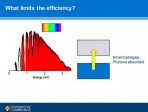 01:02:00
01:02:00
Developing new solar cells – cheaper, or more efficient?
Using solar cells to convert sunlight to electricity is an attractive way to reduce carbon emissions, but solar cells are still too expensive to be installed on the scale required. The next generation of solar cells aim to solve this problem using st....
More details | Watch now 00:57:00
00:57:00
Experimental misunderstandings: the precedent of Francis Bacon’s ‘Sylva Sylvarum’ and the beginnings of the Royal Society
Guido Giglioni is the Cassamarca Lecturer in Neo-Latin Culture and Intellectual History at the Warburg Institute, University of London. By writing a number of natural histories and above all the Sylva Sylvarum, Bacon set an important but difficult pr....
More details | Watch now 01:26:00
01:26:00
Curious maths: finding the solution
Unsolved problems in mathematics have intrigued us for centuries. It took over 350 years for anyone to provide a proof for Fermat's Last Theorem, considered by many as the most notorious problem in the history of mathematics, and no one has yet offer....
More details | Watch now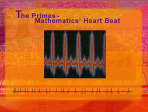 01:26:00
01:26:00
Curious maths: finding the solution
Unsolved problems in mathematics have intrigued us for centuries. It took over 350 years for anyone to provide a proof for FermatÕs Last Theorem, considered by many as the most notorious problem in the history of mathematics, and no one has yet offe....
More details | Watch now 01:27:00
01:27:00
Nature’s marvellous medicine
For hundreds of years we have used plants and their extracts for their healing properties. Ancient Egyptians chewed white willow bark to relieve fevers and reduce inflammation, and many years later scientists discovered that the bark contains salicyl....
More details | Watch now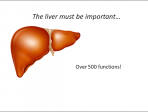 00:29:00
00:29:00
The art of stealth: a virus in my liver
The liver is a vital organ that works like a chemical factory every day to keep you alive. But what exactly does it do and how do viruses exploit it to hide from the immune system? With help from volunteers, Dr Zania Stamataki will demonstrate some....
More details | Watch now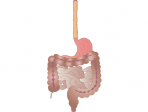 00:44:00
00:44:00
Medical myths and misconceptions
Can a cold land you in hot water? ÊCan you live without your liver? ÊCan you tell medical fact from fiction? WeÕve all been told to eat our crusts, that an apple a day keeps the doctor away and that weÕll catch a cold if we go outside with wet ha....
More details | Watch now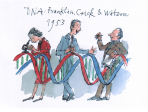 00:51:00
00:51:00
My sister Rosalind Franklin
Jenifer Glynn discusses her bookÊMy Sister Rosalind Franklin. With the help of family letters and memories, the book puts Rosalind Franklin's DNA work in the context of her other achievements, and Rosalind herself in the context of her family.
More details | Watch now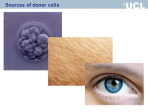 01:29:00
01:29:00
Stem cells: a cure for blindness?
Retinal degeneration is a leading cause of blindness in the western world. Drug treatments currently available only serve to slow the diseaseÕs progress and are not always successful. Rachael Pearson has helped develop a novel therapeutic approach t....
More details | Watch now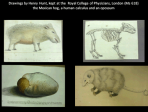 00:48:00
00:48:00
Unsung heroes: artistic contributors to the early Royal Society
This lecture discusses the contribution of draftsmen, engravers, artistic fellows and others whose graphic skills were indispensable for the meetings and publications of the early Royal Society (1660-1720). While some of the names of those who produc....
More details | Watch now 01:01:00
01:01:00
Dark, clowdy and impertinent’ – Thomas Browne’s scientific language
Succulent, cretaceous, technology, parasitical, electricity . . . Scientific investigation in the seventeenth century generated new ideas, and scientists needed new words to express them. Experimentalists, observers, collectors, and technicians all c....
More details | Watch now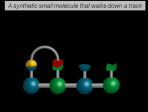 00:59:00
00:59:00
Making the tiniest machines
Over the past few years some of the first examples of synthetic molecular level machines and motors Ñ all be they primitive by biological standards Ñhave been developed. These molecules respond to light, chemical and electrical stimuli, inducing mo....
More details | Watch now
